Towards the end of every year we look at the year ahead through a cultural lens, with a focus on major events and trends around the world – in 2020, for example, the Olympics will take place in Japan, and closer to home is an Irish city that’s been named a European Capital of Culture. But, of course, we also canvas the views of all our well-travelled editors for the places they’re most excited about – in this instance not just for the next 12 months, but heading into a new decade.
We aim for a best holiday destinations list that is geographically diverse, as well as one that covers a range of trips, from eco-tourism to adventure, to inspire every type of traveller. There are the destinations that have been on our radar for a while, but keep getting better: the food scene in a little town in Maine, for example, and in the UK, the somewhat surprising British seaside spot that has us talking. There are also the affordable, go-slow spots that other tourists haven’t reached yet. Then there are the destinations, that, while always a good idea, have an extra buzz going into 2020 – such as Paris, which has upcoming hotel openings that include the first Soho House in France and will see a new modern-art museum to rival the city’s existing world-class institutions. And here at Condé Nast Traveller, we always have one eye on the surf scene (where boarders flock, eco-entrepreneurs, independent hotels and small businesses tend to follow), and we’re predicting that during the next year a tiny Philippine island will be stealing a cool crowd (whether they surf or not) from Bali.
These are the best holiday destinations for 2020 – but of course the choices are endless. For more inspiration take a look at the best places to go on holiday for every month of the year.
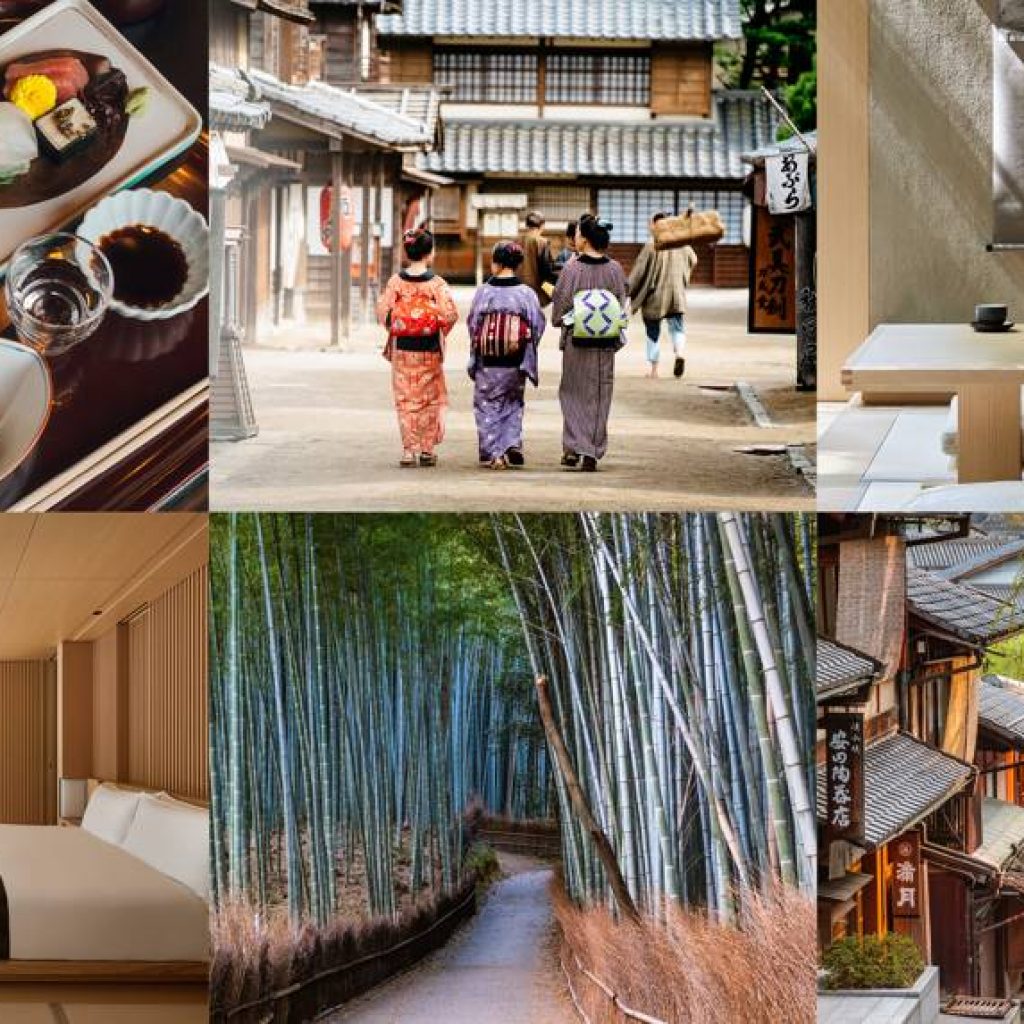
20. KYOTO, JAPAN
Hot hotel openings and sporting spectacles in Japan’s timeless city
Kyoto is an effortless blend of past and present. Its futuristic railway station purrs like a well-oiled engine, while beyond the modern shopping complexes and glassy hotels you’ll find tranquil karesansui rock gardens and centuries-old Shinto shrines.
The city is likely to receive a new influx of visitors, many of them first-timers, at the tail end of 2019, as Japan hosts the Rugby World Cup (the first time the tournament has ever been held in Asia). As inquisitive fans explore beyond the designated stadium cities, Kyoto could see its numbers significantly swell.
Of course Japan will also be hosting ‘the big one’ – the 2020 Olympic games, and hoteliers in Kyoto are ramping up their rooms to account for the crowds. Hotel Fauchon, the second hotel from the Parisian delicatessen brand, will open next year in the central Shimogyo-ku district packed with busy izakaya pubs and the feudal-era Shosei-en Garden. The cool Ace Hotel has also singled out Kyoto for its next Asian outpost, set to launch in spring 2020. The building has been designed by world-renowned architect Kengo Kuma, who also drew up the architectural plans for Tokyo’s New National Stadium, which will be used in the 2020 Games.
Adding to the roster of slick new offerings is Aman Kyoto, due to welcome well-heeled guests in November 2019. Surrounded by moss-carpeted meditation gardens and with views across to the monastery-dusted Mount Hiei, the group’s third Japanese offering will offer ryokan-inspired accommodation, onsen bathing and Kyoto-style cooking using local produce.
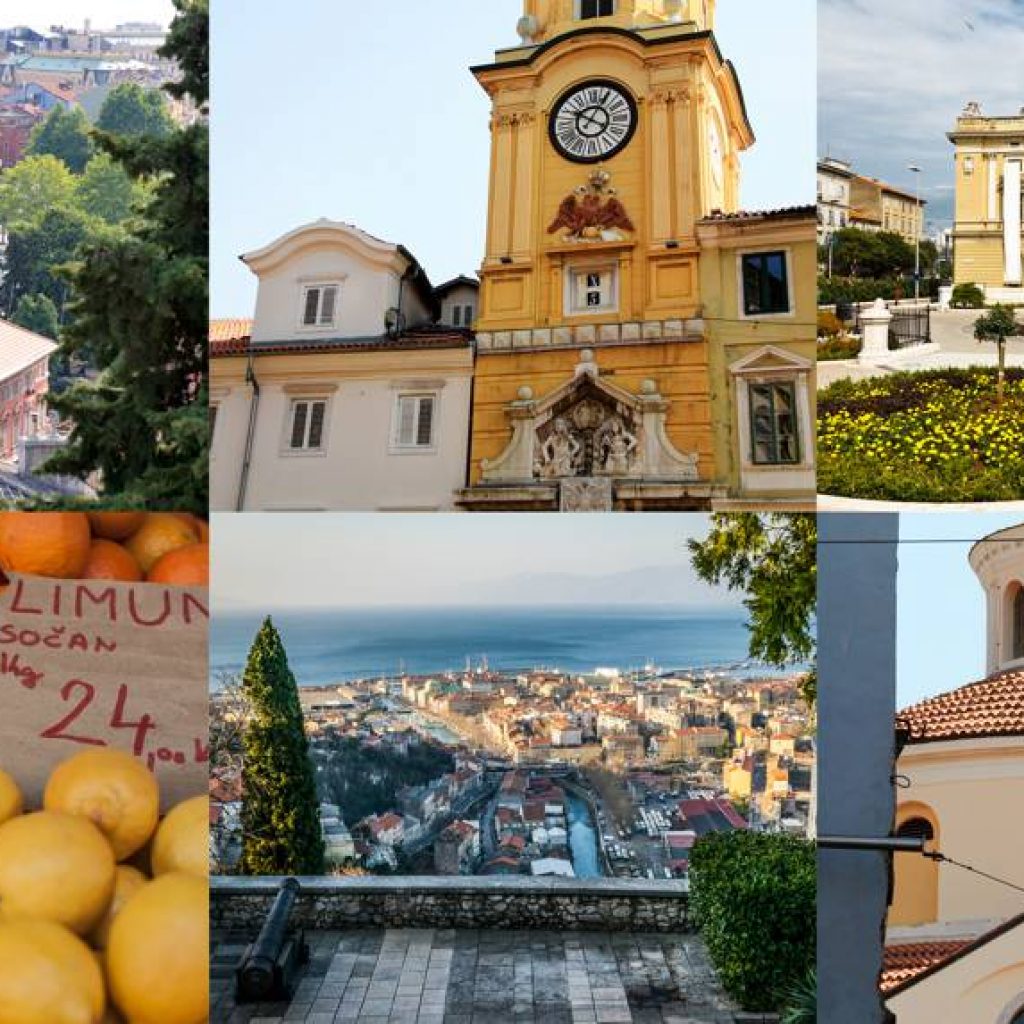
19. RIJEKA, CROATIA
The industry-heavy city is flaunting its cultural prowess
Travellers tempted to speed their way through Rijeka – Croatia’s third-largest city – on their way to Dalmatia’s tourist-bloated islands should tarry awhile. The city’s pretty-gritty blend of charming monuments, urban beaches, thrumming street festivals and intoxicating Italianate grandeur is finally starting to find its very own sort of allure.
The seaside citadel has been dubbed Red Rijeka because of its locals’ left-leaning views. The shipbuilding port is also known for its pioneering punk-rock heritage (label boss Goran Lisica Fox once described it as a musical Galapagos). In fact, in an unremarkable street, a few blocks down from the 19th-century Governer’s Palace you’ll find a discrete plaque marking the former site of Husar, Croatia’s first ever rock’n’roll club, and arguably the first of its kind in Communist-controlled Europe.
Forward-thinking visitors to Rijeka are reaping the benefits of the imaginatively crammed vaults of the Museum of Modern and Contemporary Art, and the just-caught fish at the sublimely unfussy Konoba Na Kantunu, while crowds battle for sunbed space further south in Split and Hvar. The city’s appeal will be further bolstered, no doubt, by the fact that Rijeka has been named a European Capital of Culture for 2020 alongside Galway. In preparation, works are underway on Rijeka’s first-ever art quarter, to be built on the former Benčić industrial complex, while sites such as the Sugar Refinery Palace – the future home of the Rijeka City Museum – and T-object,where the Rijeka City Library will throw down its roots, are being completely reconstructed.
The flagship Kitchen of Diversity will also set up shop in the the Benčić complex, in the new Museum of Modern and Contemporary Art, and will host workshops, discussions and cultural programmes designed to shine a harsh light on the experiences of migrants from other parts of Europe (Rijeka used to be the departure point for emigrants moving to the Americas in the early 20th century).
When the cement settles, Rijeka will soon be challenging its beachier counterparts as Croatia’s must-visit destination.
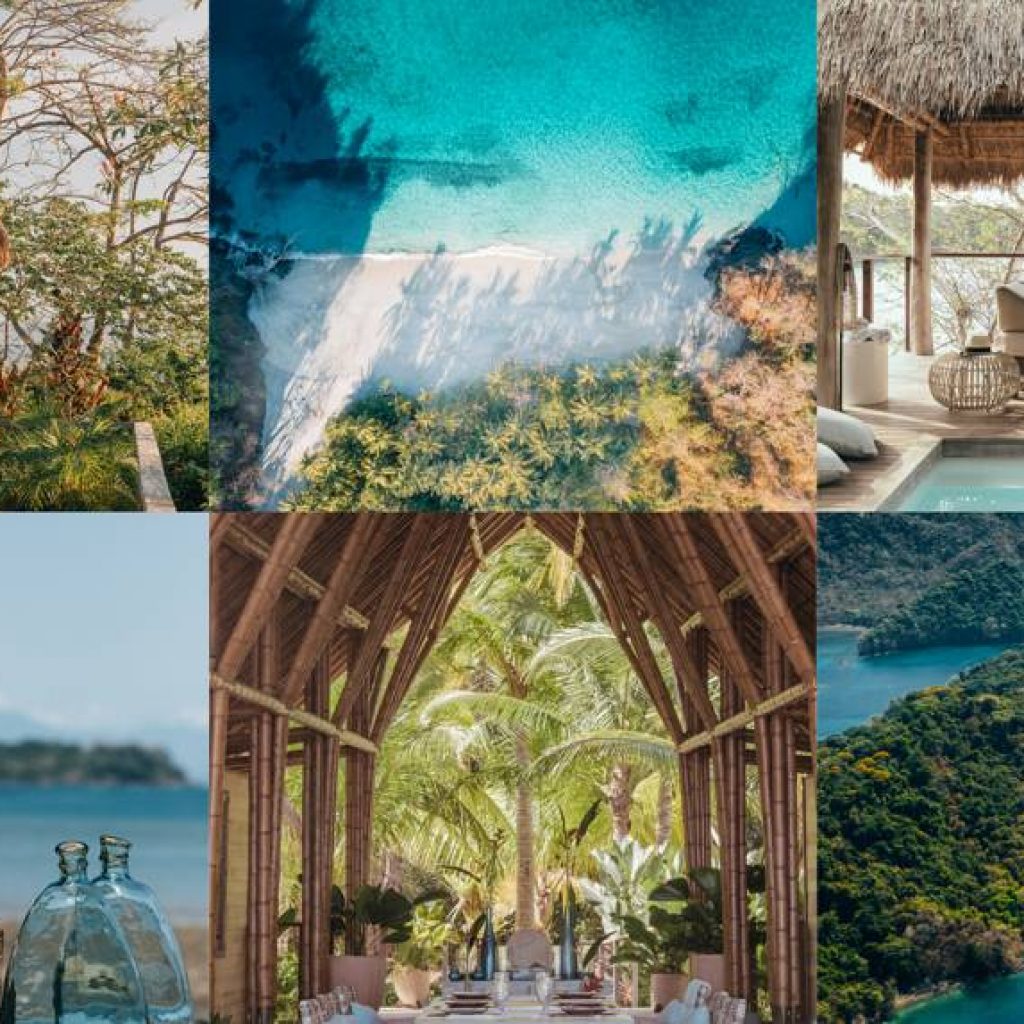
18. PANAMA
Eco-retreats are putting an idyllic isthmus back on the map
From coffee farms and cloud forests to ruined Spanish forts and footprint-free islands, Panama has the goods, just not the visitor numbers. But that looks set to change with the opening of the much-buzzed-about Islas Secas eco-retreat in December 2019, giving access to 14 rugged little islands in the Gulf of Chiriqui on Panama’s sun-drenched Pacific coast.
Cast 33 nautical miles off the mainland, the full-service, off-grid escape, which previously boasted only a clutch of beach yurts and a basic fishing lodges, comprises four individual casita sites, sleeping up to just 18 guests on one of the islands. Residences, snuggled into the island’s toucan-filled tropical forest, are designed with privacy in mind, each with an outdoor decking area, plunge pool and thatched-roof cabana.
The marine park has one of the largest coral reefs in the Pacific, meaning the waters surrounding Islas Secas bubble with eagle rays, humpback whales, hammerhead sharks and endangered Green Olive Ridley turtles. Guests will be able to paddle board, snorkel and Seabob their way around, and there will be an on-site scuba instructor, two kitted-out fishing vessels and a designated Adventure Concierge to advise on prime wildlife-spotting opportunities.
One-hundred per cent of energy used here will be solar-generated; 100 per cent of food waste is to be recycled or composted; 100 per cent of waste water will be re-used for irrigation; and 75 per cent of the remote archipelago has been left entirely untouched. You’ll find no single-use plastics here and the retreat was constructed using certified sustainable wood.
Impressive, but these green credentials stretch further afield, too. The Islas Secas Foundation supports local land, water and wildlife conservation organisations as well as community programmes in the region. Next year, a field station for scientists to observe migrating humpback whales will open, with guests being encouraged to participate in research and conservation efforts.
While perhaps the most luxurious, Islas Secas isn’t the only environmentally friendly spot in the area. Last summer, the Cayuga Collection opened a 14-room hideaway in 161 hectares of protected jungle on Isla Palenque, to the north of Islas Secas, and next year Marriott International will launch a property on Pearl Island – a slightly more developed part of Panama – as part of its Ritz-Carlton Reserve brand. There’s eco-gold to be found on these shores.
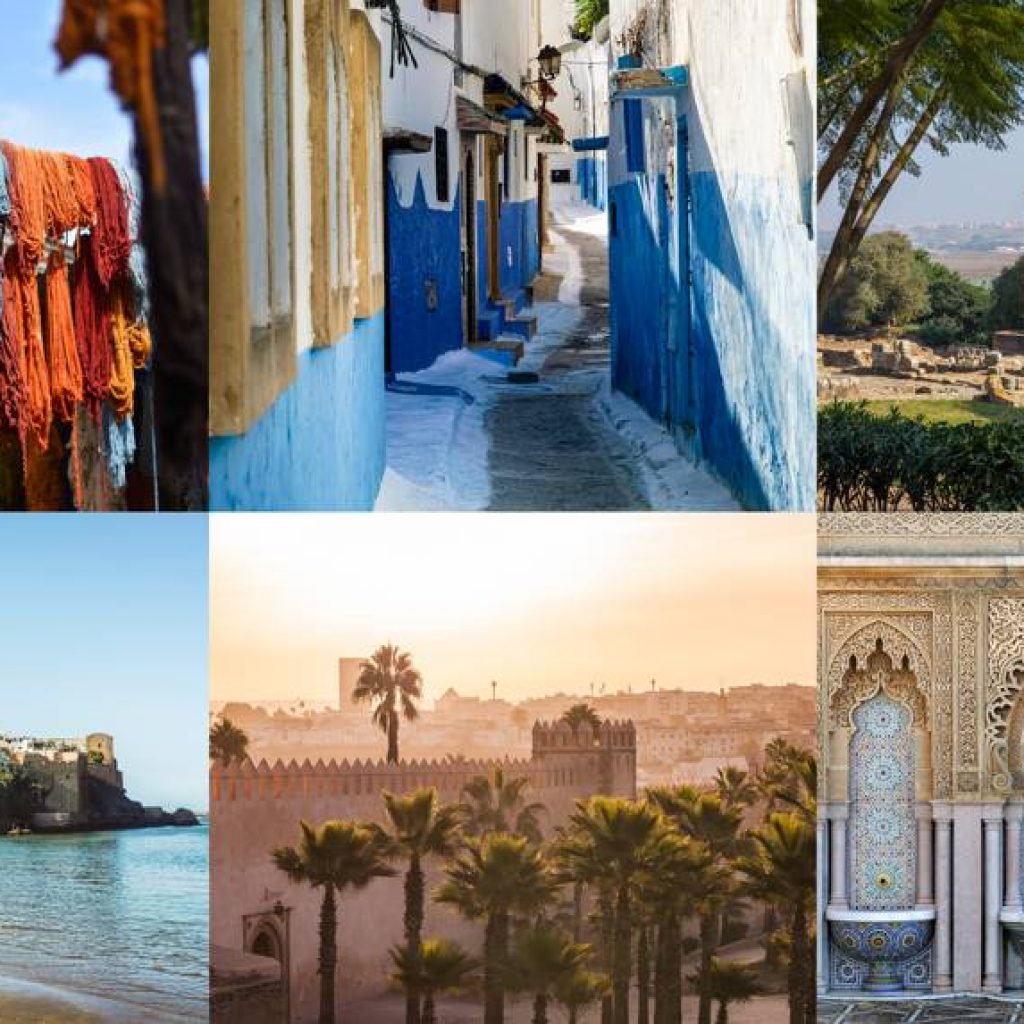
17. RABAT, MOROCCO
Art’s new epicentre
The UNESCO-listed Rabat, Morocco’s political capital, is a polyglot city (French, Arabic and English are the most common languages), where clean streets buzz with agate blue ‘petit taxis’ and the city’s role in the spice trade can be tasted in its many cafés and restaurants. More modern than Marrakech but less busy than Casablanca, there’s a distinctly European feel to the city, with its wide pavements, Andalusian gardens and city beaches filled with locals strumming guitars. Previously, travellers came for the palm-lined boulevards of the Ville Nouvelle, the 17th-century, walled medina and the evocative Kasbah at the mouth of the Bou Regreg river, which once teemed with Barbary pirates trading human lives and other ill-gotten goods. But the city is upping its art game, drawing a new kind of bohemian visitor to its streets.
In September 2019, the inaugural Rabat Biennale offered a new perspective on the artistic practices and cultural heritage of the Global South, using Rabat as its axis. Operating under the title An Instant Before the World, the international exhibition, curated by Algerian art historian Abdelkader Damani, was spread across significant cultural sites in the city – from the Mohammed VI Museum of Modern and Contemporary Art to the historic 19th-century Rottembourg fort. It was also dedicated to female creatives around the world, including Palestinian installation artist Mona Hatoum and the late Dame Zaha Hadid. The Biennale highlights a multi-disciplinary approach to art, inviting film-makers, sculptors, architects and performance artists to create a wide range of works.
Stays here come in the typically charming riad style, but the smell of fresh polish signals a new high-end opening, as the swanky Ritz-Carlton Rabat – set amid acres of oak forest and manicured gardens, next to the famed Dar es Salam Golf Course – is due to throw open its grand doors later in 2019, with five restaurants, ornate spaces, a spa and a hammam.
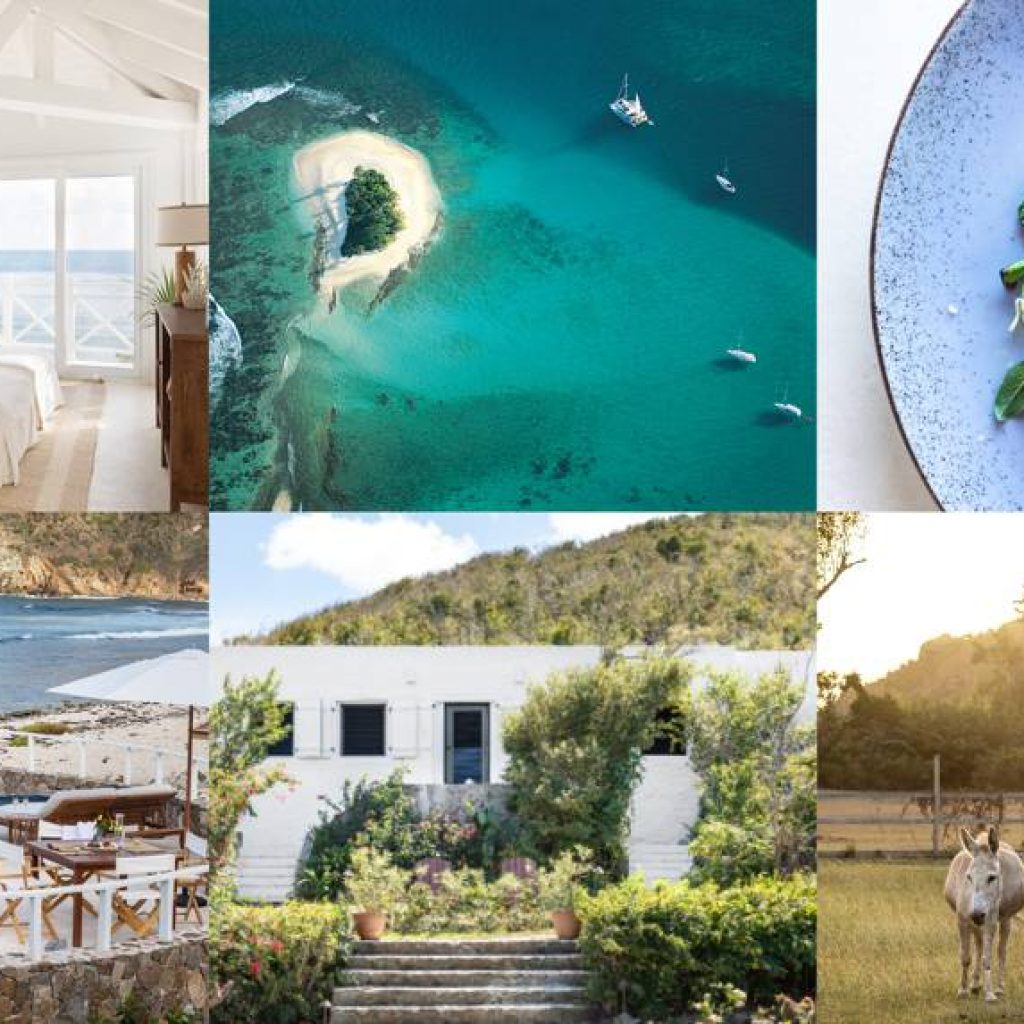
16. THE BRITISH VIRGIN ISLANDS
The Caribbean’s comeback kid
The British Virgin Islands suffered terribly in the wake of Hurricanes Irma and Maria – the former the most powerful to ever hit the Atlantic – and the destination experienced a 90 per cent loss in tourism as a direct result of the damage. But over the past two years, following extensive hotel renovations and reopenings, these enduringly cheery islands – awash with pearlescent bays and neon-bright shoals of fish – are finally bouncing back.
Oil Nut Bay was one of the first to relaunch in early 2019, with the retreat – spread across 300 acres on the eastern tip of Virgin Gorda – adding a clutch of two-bedroom villas and suspended private pools (accessible only by helicopter or boat). Similarly exclusive, the privately owned Guana Island is home to seven butterscotch beaches stretching over 850 acres, yet hosts up to only 35 guests.
Addressing the urgent need to replant the island’s indigenous trees, the Seeds of Love charity – founded in 2017 when Gabi Romberg of the islands’ German tourism agency started a fundraising drive to replant coconut palms on decimated beaches – is ramping up its efforts to raise awareness and funds. While empowering local communities, it’s also calling on ‘voluntourists’ to help plant vital, life-giving vegetation. In August 2019, the Beyond the Reef project saw the wreckages of three planes and the former Willy T Ship, left behind from the devastation of Hurricane Irma, sink into the ocean. The team worked solidly over several months to strip the vessels of all hazardous materials and cut holes in their surfaces to create handy deep-dive access. The resulting dive sites will raise money, which will be ploughed into local communities and used to teach local children how to swim.
These previously pristine islands have shown their mettle in the wake of disaster and should soon be rewarded with the return of travelers.
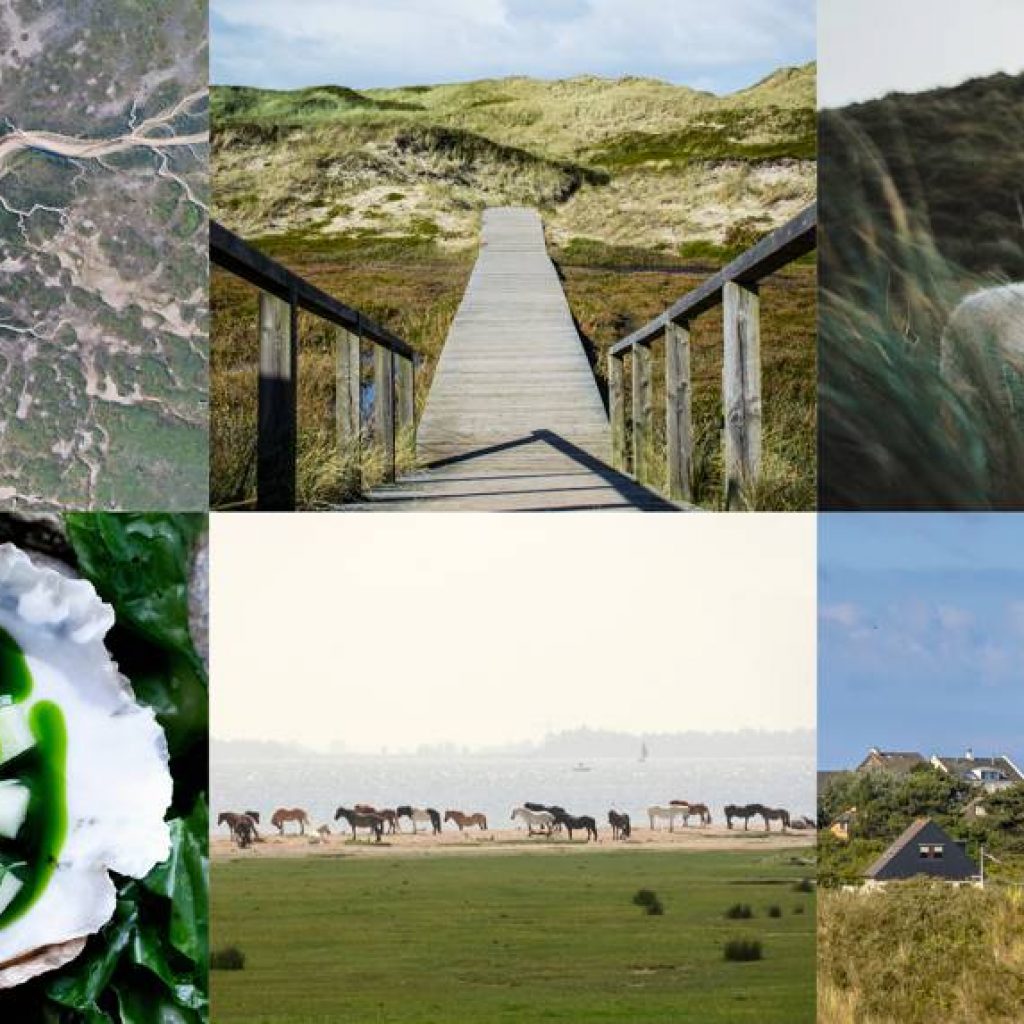
15. FRISIAN ISLANDS, DENMARK
A windswept archipelago where sustainability is king
Shared by Denmark, Germany and the Netherlands, and linked by the tin-coloured Wadden Sea (Waddenzee to locals), the Frisian islands are tantalisingly tiny, offering a natural fringe barrier between the shallow waters of the Frisian coastline and the knife-cold North Sea.
Here, sustainable openings bloom. Holland’s Lauwersmeer National Park started offering Dark Sky safaris in 2018 (quite extraordinary, considering Holland actually has one of the highest levels of light pollution in the world) while Pieterburen Seal Sanctuary, which lets visitors rehabilitate and release two native seal species, opened in the neighbouring Groningen province in 2019. Quaintly Dutch campground retreats such as Beleef Lauwersoog offer excursions to Schiermonnikoog – virtually car-free and home to breeding colonies of birds – and recently beefed-up digs in the area include new barrel-shaped sleeping pods and refurbished overwater bunkers, once occupied by sheltering duck hunters on wild swaths of the North Sea.
These small islands are pretty powerful pieces of land. That’s because the UNESCO-listed Waddenzee is considered the largest and most important coastal tidal wetland in Europe, forming the world’s largest connected system of sandbars and mudflats. The nutrient-rich waters make the Sea an incubator for many varieties of fish and sea mammals and millions of migratory birds that stop over on their way from Siberia to Africa in order to bulk up dwindling fat reserves.
The best way to get around these parts is on a wadlopen, or mudwalking, tour, when the sea retreats, allowing you to walk across the bottom of the ocean. But delicate sorts be warned: the activity’s been dubbed ‘horizontal alpinism’ due to its challenging nature. Rumbling stomachs are easily rewarded here, too. The Denmark Oyster Festival, which takes place every October, lures chefs from across the country, and you’ll find exquisite local produce on offer in many of the islands’ restaurants. Take a trip to nearby Texel, 20 minutes by boat from Den Helder on the Dutch mainland, to find Bij Jef, where the kitchen is overseen by ambitious chef Jef Schuur, who uses freshly caught ingredients, such as cockles and shrimp, from the Wadden Sea in his refined dishes.
On land, 2020 will see the Oranjewoud music festival put on concerts in eclectic spots across Friesland, from steam trains and gyms, to giant plastic bubbles and swimming pools. This smattering of islands are certainly making their mark.
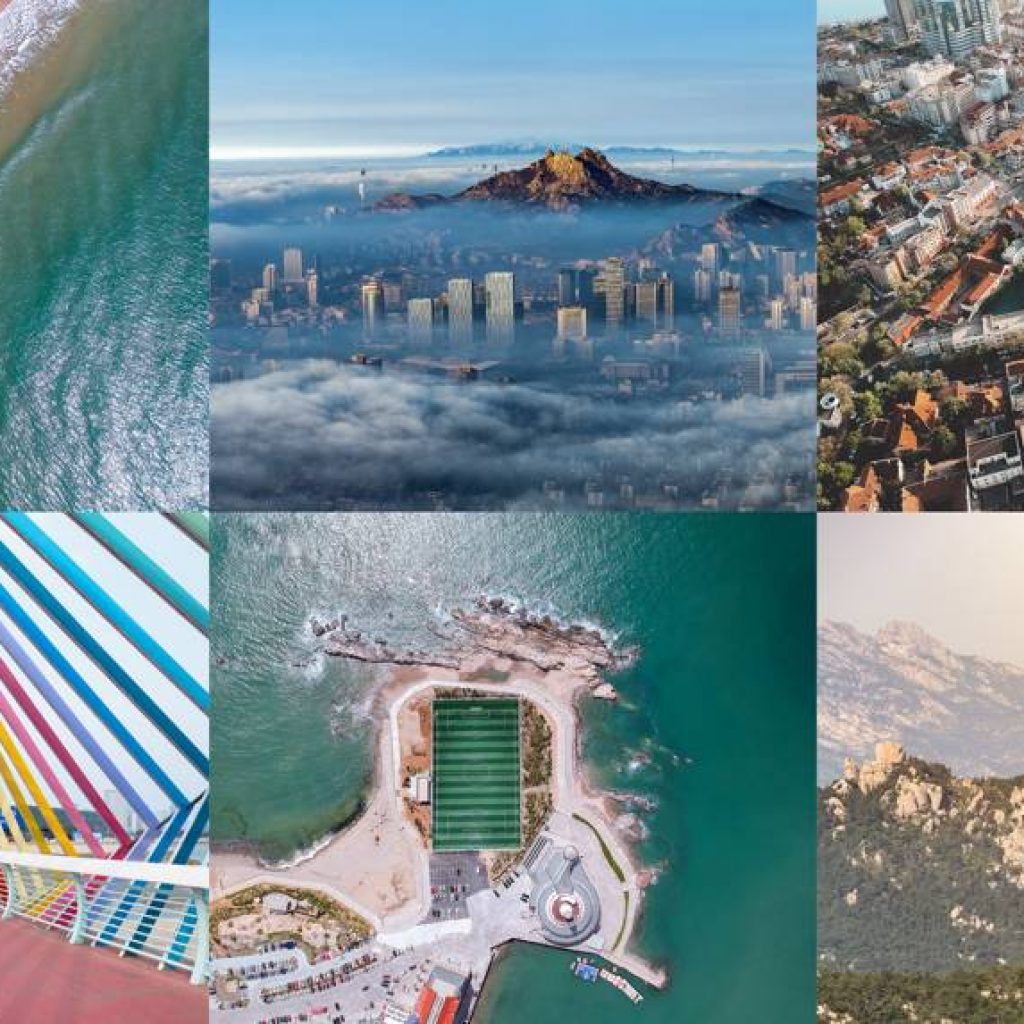
14. QINGDAO, CHINA
This ever-green Chinese city is turning over a new leaf
Make sure to check the latest advice from gov.uk before you travel
Qingdao on China’s Yellow Sea coast is a place of exhilarating contrasts, where historic German buildings (remnants of its occupation in the late 19th century) rub up against dazzlingly modern sculptural art. Fresh sea air keeps coastal Qingdao cool while inland cities swelter during the hot summer months. Thankfully, the ubiquitous hometown beer Tsingtao is also on tap to keep parched throats at bay.
The mish-mash of architecture in this intriguing city – from its concession-era old town mansions to its resplendent red-roofed hillside villas – sets it apart from some of China’s comparatively soulless, glass-and-blue-tiled industrial hubs. The green city also frequently tops lists for liveability, with its leafy parks, well-trodden boardwalks and alluring hiking trails in the Lao Shan Scenic Area to the east of the city, which wind through mist-cloaked granite peaks and bubbling spring water pools (Taoist priests once declared this place the home of immortal beings and sacred waters).
But Qingdao is about to get even more green with the arrival of the new China Eden in 2020, the first of its kind outside of the UK. The project – designed in collaboration with London-based Grimshaw Architects, also behind the Eden Project in Cornwall – is being constructed on a large sweep of reclaimed and environmentally damaged land at the confluence of two rivers, which was originally used for salt production and prawn farming.
China’s counterpart to the Cornish eco-attraction is set to be themed around water (apt as the city itself is surrounded by sea on three sides), and will have the world’s highest indoor waterfall at its centre, plunging from 164ft up, the same height as Niagara Falls.
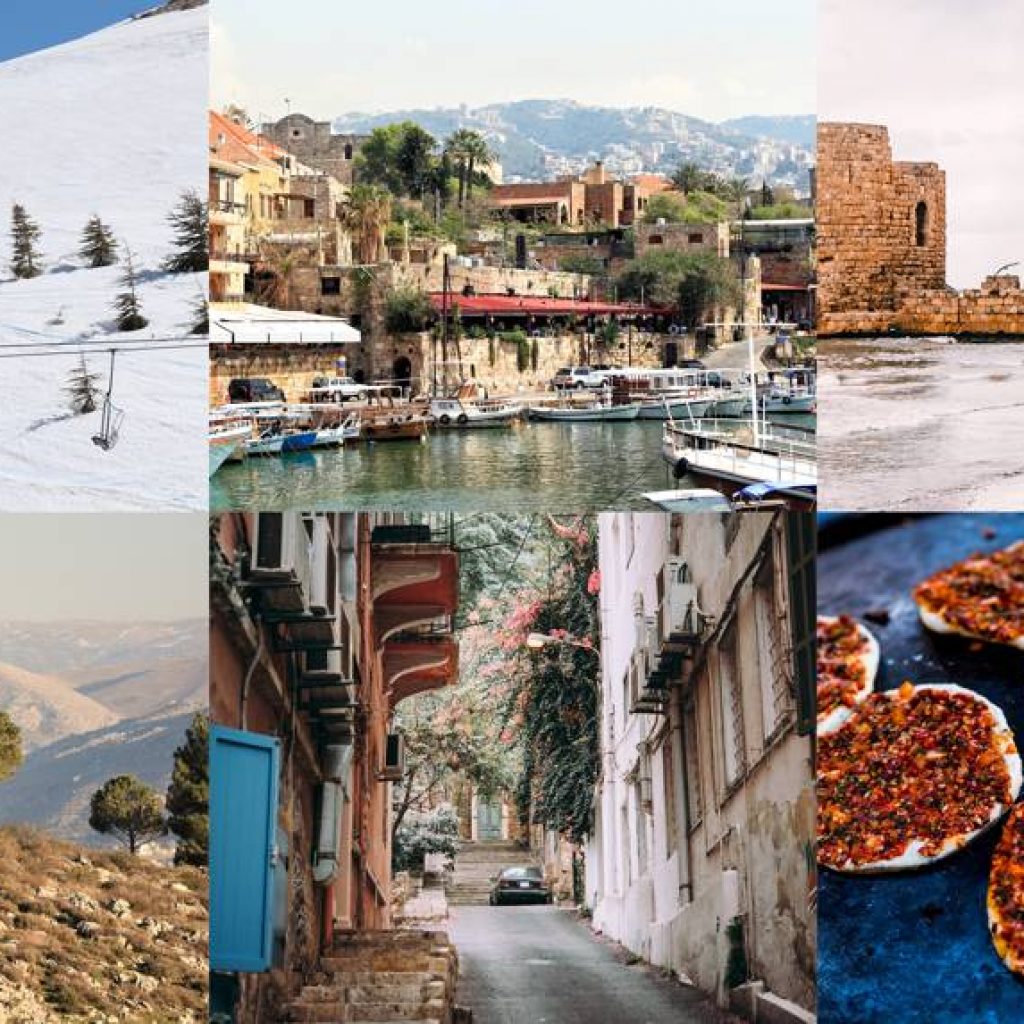
13. LEBANON
A dynamic country capitalising on its cultural clout
Momentum is starting to gather in fascinating Lebanon, and its crumbling crusader castles and intricate mosaic-paved streets, which have become tourist-free in recent years, are ushering in culture-curious travellers once more.
Earlier in 2019, the British Foreign Office changed its travel advice regarding Lebanon – which previously warned against visiting areas including the Bekka Valley – deeming it safe for travellers to return. As such, adventurous tour operators are introducing exciting itineraries for 2020, opening up Lebanon’s world-class restaurants, shortbread-sand beaches and ancient ruins for exploration.
At Baalbek lies one of the largest and best-preserved Roman sites in the Middle East, with its monumental 2,000-year-old temple to Jupiter and six towering, free-standing columns. As the home of the Phoenicians, the early traders who controlled most of the ports in the Mediterranean, the country is full of similarly intoxicating ancient sites, including the enormous hippodrome and Roman ruins of Tyre, which can also be admired underwater while snorkelling (you may have to jostle for space with the resident sea turtles, though).
A melting pot of religions, traditions and cultures, Lebanon’s appeal is perhaps most apparent in Beirut, where a burgeoning arts scene draws in young creatives and alternative business owners. At Tawlet, a different woman from a local community cooks the food of her village every day on rotation, and the same non-profit runs the spice-scented farmers’ market at Souk el Tayeb. Less than an hour away, you’ll find Ixsir, which stakes a claim to the title of ‘the highest altitude vineyard in the world’. Indeed, the country’s wine industry looks set to make (fresh on the nose, stone-fruit-scented) waves in 2020. In the 1980s, there were just seven wineries in the Bekka Valley, now there are more than 40, some of them producing world-renowned bottles such as Chateau Musar.
Add to that fine-sand beaches, a sprawling network of mountains and expansive, lung-cleansing cedar forests, and it’s not hard to see why Lebanon’s on the up.
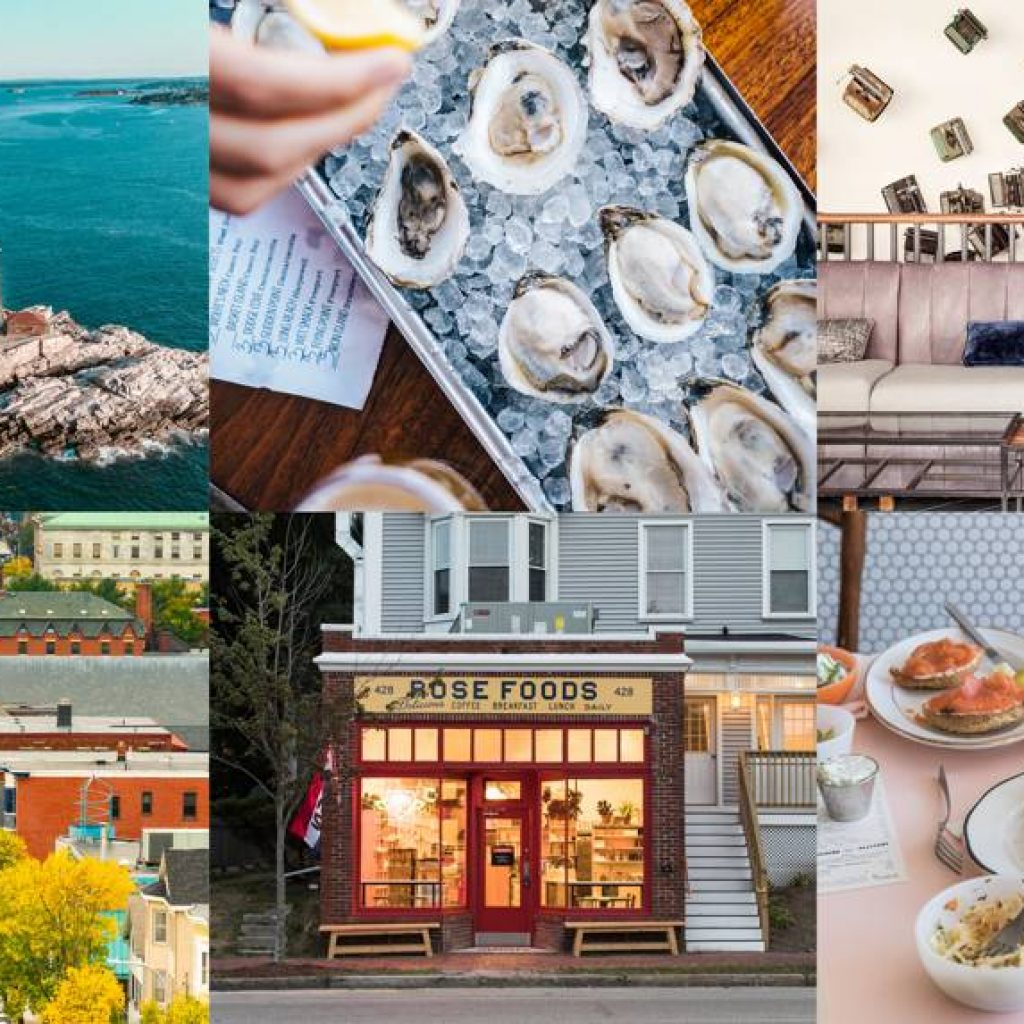
12. PORTLAND, MAINE, US
A harbour city with a food scene firing on all cylinders
Portland, Maine. Not to be confused with Portland, Oregon. Although the cities share similarly ardent fixations with food. Portland’s food scene is as diverse as you’d expect from a place with such an obscene wealth of produce at its fingertips – this is a city where the local bluefish is so fresh it’s almost still flipping on the plate. Eventide Oyster Co. (pictured) serves up world-class seafood, while Jewish delis such as Rose Foods and Sisters, low-slung sushi bars and hipster trucks are scattered across the city, dishing out everything from Mexican-Korean fusion at Tacos del Seoul to exquisite ramen and octopus fritters at Mami Food Truck on Fore Street. You’ll also find superlative sweet treats at Tandem Coffee + Bakery (go for the chocolate malt cake) and Belleville on North Street. And while touting your lobster rolls and seasonal baby scallops on Instagram (Bite into Maine does incredible wasabi mayo rolls just FYI), don’t forget to pay a visit to that random guy selling temaki hand rolls out of a Yeti cooler on the side of the street. It might just be the best thing you eat all year. New foodie openings here are frequent and fruitful. Handily, they can be tracked on the Portland Food Map, a collaborative effort from the Portland food community.
Over the past few years the city’s hotel scene has seriously raised its game too, with upscale spots sprouting like flowers in fresh soil. You’ll find plenty of boutique hotels – such as The Francis and the lovingly restored Inn on Carleton – in the historic West End, while conversions of industrial and commercial buildings provide hip new alternatives downtown (try The Press Hotel, in the former headquarters of the Portland Press Herald, for its vintage typewriters and blown-up news copy on the wall). Slightly further afield, island resorts in Casco Bay, a 15-minute ferry ride from the mainland, let you escape the city altogether.
A couple of hours further north you’ll also find Deer Isle, accessible by bridge off the Blue Hill Peninsula in Penobscot Bay. This is a place fueled by lobster meat, and you’ll see primary-coloured buoys strung up all over the town (its working harbour is the busiest lobster port in Maine). Deer Isle’s off-shore archipelagos and former granite quarries are not only spectacularly beautiful, they’re also conserved for future generations by the Island Heritage Trust. Go now and you may find yourselves the only souls around.
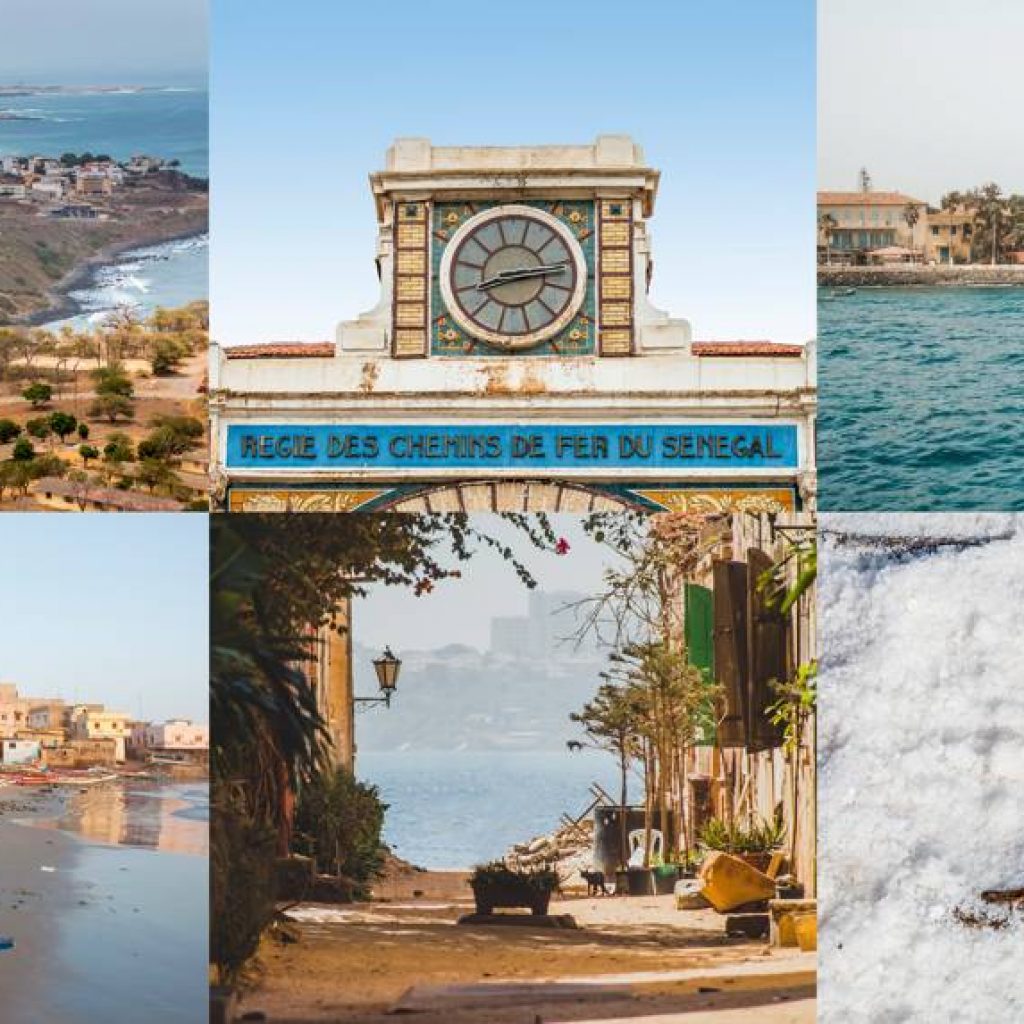
11. DAKAR, SENEGAL
West Africa’s new centre of style
Teetering at the tip of Africa’s westernmost peninsula, Dakar thrums with the energy of a city that defies easy categorisation. The art-centric capital is slick yet frenetic, proudly West African but Francophone, and these contrasts show in its mish-mash of old and new architecture and lively cultural scene. It’s one of the region’s safest and most politically stable cities and also the most accessible, with regular affordable flights from TAP Air and Iberia, while a rumoured non-stop on Ethiopian Airlines from JFK will soon make the Senegalese capital doable in a long weekend for Statesiders, too.
Drive along the seaside Corniche and you’ll spot wetsuit-free surfers (there are world-class waves right off Ngor Island), sun-worshippers and oil-slick bodybuilders. At night the city comes alive with a hypnotic blend of the local mbalax dance beats, reggae and Senegalese hip-hop. Stop by restaurant and live-music venue Just4U for big-name acts and the Penc Mi club for rising mbalax stars.
Dakar hosts an annual Fashion Week in June and its Biennale is also back in 2020 (28 May – 28 June), marking the 30th anniversary of the event. The exhibition will showcase diverse forms of contemporary art, from sculptural to digital, under the title theme Ĩ’Ndaffa, or ‘out of the fire’.
There are some sound business hotels in the area, such as the water-facing Terrou Bi and the Radisson Blu on the popular Sea Plaza. But Seku Bi, from surf brand Bantu Wax, is Dakar’s first design hotel. Divided between two French colonial villas within walking distance of Independence Square and the city centre, it’s the slickest place to stop while in town.
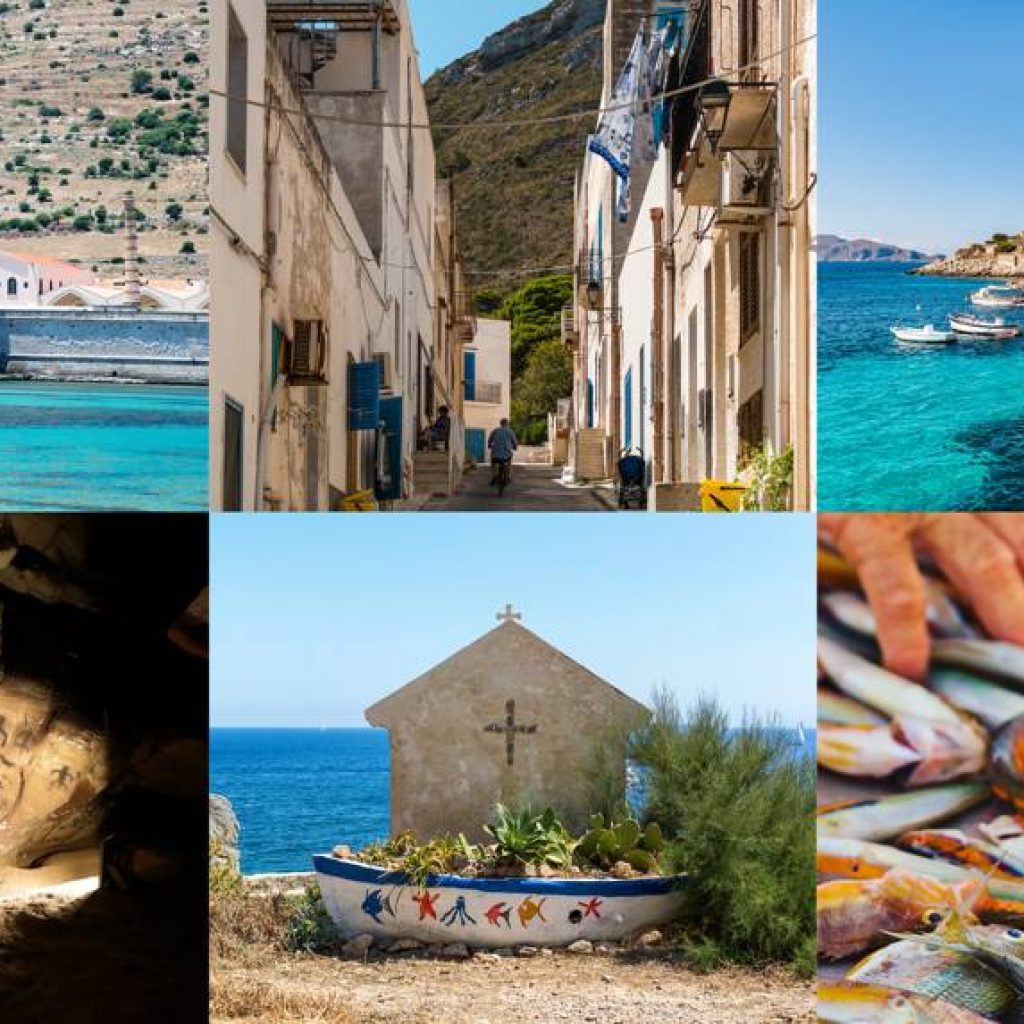
10. EGADI ISLANDS, SICILY
Five isolated, history-rich islands ready to make their mark
The secret butter-sand beaches and sunken shipwreck ruins of the Egadi archipelago are humming with the sort of quiet buzz that envelops something special. In-the-know travellers previously drawn to Sicily’s sun-splashed Aeolian Islands are looking further afield to fuel their lust for affordable, go-slow spots that other tourists haven’t reached. Flung off the western coast of Sicily, a short hydrofoil ride from Trapani, the Egadi archipelago is formed by the islands of Favignana, Levanzo and Marettimo and the rocky islets of Formica and Maraone.
The butterfly-shaped Favignana, the largest of the five islands, offers tussock-flecked mountains and photogenic bamboo-framed daybeds on the beach. Streets are foliage-fringed and bikeable and the island is also home to the Stabilimento Florio, a former tonnara, or tuna fishery and factory, that is now a fishing and maritime museum.
Levanzo is the smallest and perhaps the most exquisite of the three main islands, with a jumble of whitewashed houses clustered around the port like wonky teeth. Here, scuba enthusiasts can dive the atmospheric remains of a Roman shipwreck scattered with amphorae and shards of black glazed pottery. On dry land, the cave-art figures scratched into the walls of the Grotta del Genovese date back to the Palaeolithic era.
Marettimo, considered by some to be the ancient homeland of Odysseus, is a hiker’s dream, and trails will take you past Norman castles and Byzantine churches. Climb up to Pizzo Falcone, at a majestic 2,300 feet above sea level the island’s highest point, for air dusted with the scent of fragrant plants and the sight of peregrine falcons circling overhead.
You’ll not want for wildlife here. The islands represent the largest Marine Protected Area in Europe, and the seabed is home to vast, submerged prairies of Poseidon seagrass – providing a valuable reproductive habitat for many fish and migratory seabirds, as well as coffee-table-sized Caretta Caretta sea turtles and rare monk seals.
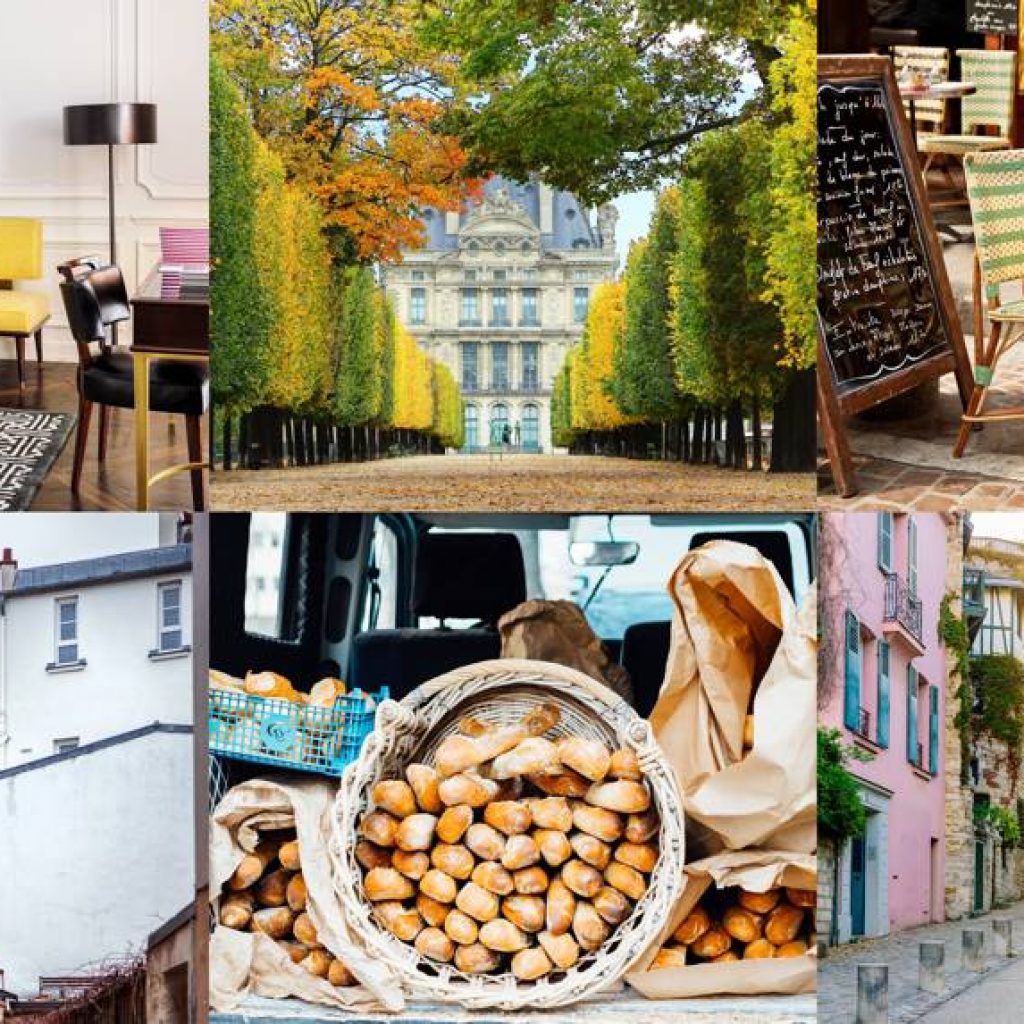
9. PARIS, FRANCE
Hip new openings reignite the city’s enduring appeal
Bien sur, Paris never really went away, but a volley of slick new openings looks set to draw a fresh crowd to the City of Light. A collective breath is still being held for the opening of J K Place Rive Gauche, which was scheduled to swing open its doors in Summer 2019 but is still delayed. Until then, eyes are firmly focused on next year’s new lot. First Up: Bulgari Hotel Paris, designed by Parisian architects Valode & Pistre (the team charged with overhauling the design of the Gare du Nord) will grace the gleaming paving stones of the Triangle d’Or. The eighth Bulgari outpost will have a spa and pool, a restaurant with a contemporary Italian menu designed by Michelin-starred chef Niko Romito and and a leafy courtyard garden.
The first half of 2020 will also see the new Cheval Blanc Paris throw open its doors on the banks of the Seine. The hotel will be housed in the old Art Deco La Samaritaine building, once a grand department store selling designer goods to chic shoppers. A garden terrace above the building’s famous glass rooftop and a restaurant overseen by three-Michelin-starred chef Arnaud Donckele will undoubtedly draw in a cool crowd. On top of that, 2020 will see France’s first Kimpton hotel open in the Opéra district; outré designer Philippe Starck will oversee a new MGallery by Sofitel; and there’s a new Soho House offering in the works, too, which will open in the hip Pigalle quarter.
Meanwhile, billionaire art collector François Pinault has been ploughing his cash into the development of an ambitious new art space housed in the historic Bourse de Commerce (the former stock exchange) near the Louvre. The new modern art museum has been designed by Japanese architect Tadao Ando, while the sweeping circular panoramic painting lining the building’s giant dome, depicting global trade in the late 19th century, has been fastidiously restored as part of the project.
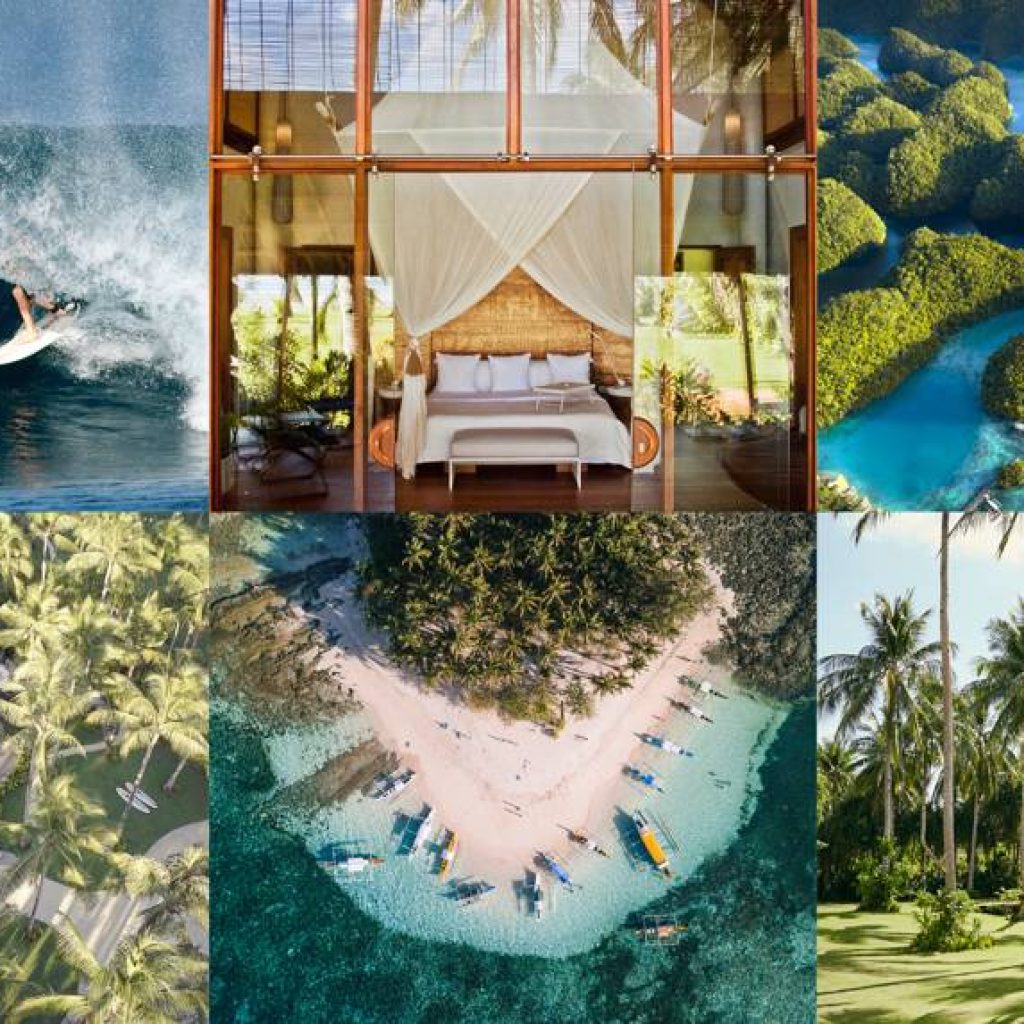
8. SIARGAO, PHILIPPINES
The tiny Philippine island giving Bali a run for its money
Ask the surfers: something special is happening in Siargao. The teardrop-shaped tropical island in the rarely trod south-east of the Philippines is luring legions of right-on sorts to its shores, with its gnarly surf breaks, including the legendary Cloud 9 barreling wave, which counts Kelly Slater and Anthony Kiedis among its riders.
Siargao is fringed with pristine beaches, tree frog-green mangrove forests and sweeping groves of coconut palms, and it’s little wonder tourism here is gathering pace. Less than a tenth of the size of Bali, the island feels the way the Indonesian hotspot did three decades ago: scooters with surfboard racks ferry people about the streets, convenience stores pour petrol from glass Coca Cola bottles and farmers sell rice – dried on tarpaulins at the side of the main road – at the local market.
Of course after the surfers come the eco-entrepreneurs, and Siargao is welcoming a slow glug of new independent hotels and small businesses to its bone-white beachy shores. 2019 saw the likes of Bulan Villas in the lively hub of General Luna, and the refreshingly stripped-back homestays at the two-unit Kubo join the exquisite Nay Palad Hideaway and the sustainability-conscious Harana Surf Resort as the island’s most appealing accommodation offerings.
Those who’ve had their fill of surfing can sail to the nearby white-sand-ringed islets of Daku, Guyam and Naked Island or explore Siargao by motorbike. To escape the (relative) crowds, pay a visit to the almost-deserted beaches of Pacifico and Alegria to the north, where palms trees cast dancing shadows on the sand.
This island idyll won’t stay low-key for long – 12 flights a day now land at Siargao’s tiny airport, up from two per week – so pack your surfboard now.
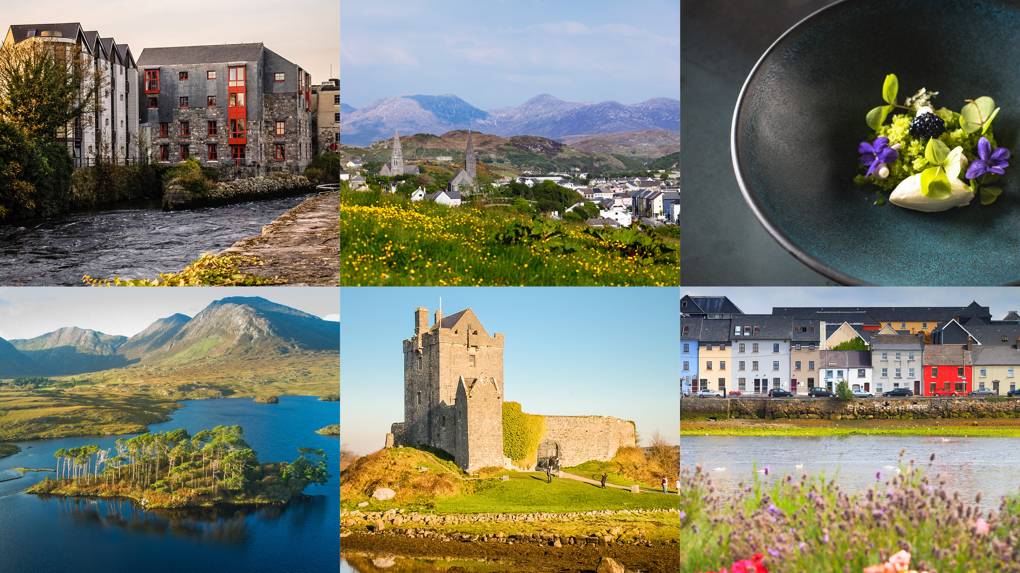
7. GALWAY, IRELAND
All eyes on 2020’s European Capital of Culture
Next year, Ireland’s effervescent west-coast city will throw its arms open wide to the world as it becomes the 2020 European Capital of Culture. With its glut of traditional pubs spilling out jaunty bodhrán and fiddle music, the bohemian city has spent 2019 testing new community heritage and arts projects, such as pop-up culture cafés and funambulism (tightrope-walking) workshops. But the best is yet to come in 2020, with some terrific events being rolled out across Galway’s pubs, hubs and beaches, including new artworks by David Best (of Burning Man fame) and a series of intimate readings of Homer’s Odyssey (using Emily Wilson’s English translation, the first by a woman) on Galway’s blustery beaches. Margaret Atwood will also take part in the city’s International Women’s Day celebrations in March.
Galway’s designation as a 2018 European Region of Gastronomy has already cemented it as a fizzing foodie hub. The brilliantly beardy JP McMahon is Galway’s most high-profile chef, earning the city its first Michelin star in 2012. He’s also the man behind the annual Food on the Edge symposium to explore the future of food – next taking place in late October 2019 – which draws in big names such as Nathan Outlaw and Skye Gyngell. The ambitiously modern Loam has joined McMahon’s 24-cover Aniar as one of only two Michelin-starred joints in the city, but it’s what’s happening away from the notebooks of the Michelin inspectors that’s most exciting. Galway is home to the world’s longest-running oyster festival (65 years of shucking so far), which also sees the World Oyster Opening Championships whip up competitive fervour among shellfish enthusiasts. You’ll find local Dooncastle and Flaggy Shore oysters (as well as natural wines and exquisite seaweed shortbread) served up at McMahon’s latest terroir-based opening, Tartare. And in nearby Burren, an hour away from the city, a raft of local producers are really bolstering Galway’s gourmet credentials, with a focus on fish-smoking, cheese-making and small-batch brewing (and look out for Burren wildflower honey at Galway’s Saturday market, too).
Unsurprisingly, the city – which is also a mid-point stop along the glorious 1550-mile Wild Atlantic Way driving route – will welcome a clutch of new hotel openings in 2020. The most promising of which looks to be the Dean Galway, a sister hotel to the moody, Brooklyn-feel Dean Dublin, on the spot of an old dry cleaners in Bohermore.

6. KANGAROO ISLAND, AUSTRALIA
The far-flung wildlife haven needs your support more than ever
With milky turquoise seas, craggy limestone cliffs and eucalyptus forests filled with big-bellied koalas, Kangaroo Island – 70 miles off mainland South Australia – is a truly wild destination. But the recent bushfires have ravaged these once-pristine shores, burning through 155,000 hectares (about a third of the island’s entire area), killing an estimated 25,000 koalas and decimating the smartest property, Southern Ocean Lodge.
However, local businesses that depend on tourism for their livelihoods are already working to rebuild this sun-smattered island, and urge people to travel here to enjoy its low-impact, high-end eco resorts, Little Sahara sand dunes and rambunctious Seal Bay sea-lion colony, most of which have remained completely undamaged. The recently opened beach houses from Hamilton & Dune – with 24-hour concierge service and views across the penguin-speckled Emu Bay coastline – are some of the finest places to stay.
James and Hayley Baillie, the owners of the Southern Ocean Lodge (which will be entirely rebuilt using its original plans), are urging people to plan a trip. ‘Kangaroo Island is still very much open for business,’ they say. ‘With around 250,000 hectares in the east unaffected by fires, now is the time more than ever that the Kangaroo Island community needs support from visitors from Australia and overseas.’
The island, known as a little Noah’s Ark is a refuge for many endangered species. The not-for-profit KI Wildlife Network is currently taking in animals from across the island, with a group of volunteers caring for injured and orphaned creatures including endangered Kangaroo Island dunnarts, short-beaked echidnas and the isle’s very own subspecies of kangaroo.
In April 2020, Tasting Australia, a 10-day food festival, will still showcase its blossoming cellar-door experiences and award-winning regional produce – from native juniper gins and gourmet sheep’s cheeses to southern rock lobster and honey produced by the island’s Ligurian bees, believed to be the last remaining pure stock found anywhere in the world.
Although it is currently closed until further notice, work will be done on a clutch of new eco-tents on the Kangaroo Island Wilderness Trail, a five day, 37-mile trek which weaves through majestic sugar gum forests and blustery wildflower-studded heaths. KI needs visitors’ support as it rebuilds itself after the devastating natural disaster, but this exquisite island oasis will soon be bouncing back.
South Australia’s bushfire conditions change every day, so make sure you check updates at cfs.sa.gov.au before traveling
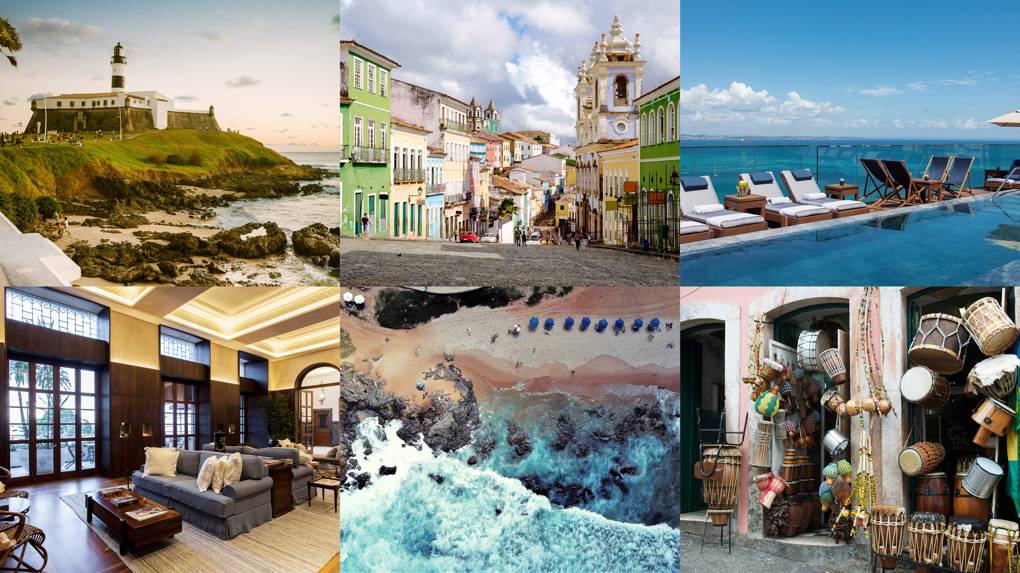
5. SALVADOR, BRAZIL
The Afro-Brazilian city shining bright in hard times
The Amazon fires made headlines across the world in 2019, shining a light on unsustainable logging, deforestation and mining in one of the planet’s most threatened ecological regions. But instead of foregoing travel to these areas, experts argue we should be supporting them more than ever. So don’t write off Brazil just yet. Studies have found that eco-tourism, when done well, is the most profitable use of land in the long term, providing sustainable employment for local people, warding off takeover by polluting big business and protecting the incredible biodiversity of the region. ‘A visit to the Amazon makes the case for protecting the rainforest for responsible tourism versus logging, deforestation and mining,’ says Justin Francis, CEO of lobbying tour operator Responsible Travel.
After completing a five-year historical preservation initiative to save its UNESCO designation, heady, Afro-Brazilian Salvador is booming. The capital of the state of Bahia has a new metro line connecting the frenetic city centre and the expanding international airport, where Latam’s weekly direct flight from Miami touches down. And the country’s skill for throwing one hell of a party is celebrated at the new House of Carnival, which dedicates four floors to revelry and rhythm.
There are Art Deco gems to be found in Salvador, too. Early 2019 saw the arrival of the Fasano hotel chain, which has added its polish to the building that housed the headquarters of the A Tarde newspaper for 45 years. For affordable architectural appreciation, ride the Deco-styled Elevador Lacerda public lift, which connects the Cidade Alta (upper city) to the Cidade baixa (lower city) and is a great way to soak up spectacular views.

4. ARMENIA
A hill-walker’s heaven in the booming Caucasus
The Caucasus has been on the up for the past couple of years, with visitor numbers to diverse Georgia booming. Yet neighbouring Armenia has been somewhat overlooked – until now. This charming country has a huge amount to offer. Its food scene – a heaving panoply of honey-drenched baklava, pillowy manti dumplings and wheelbarrow loads of lavash – is up there with Tbilisi’s, and pretty Yerevan is bursting with bookshop cafés (such as the unpretentious ArtBridge Bookstore Café) and traditional restaurants that look like Old Master paintings (Dolmama on Pushkin Street serves up Armenian lamb shank and baby red spotted trout, as well as the hearty dolmas it’s named after).
The country was the first to adopt Christianity as a state religion in 301 AD, and its mountain crags are home to some of the world’s earliest churches. But there’s more to Armenia than its ecclesiastical flourishes. The recently waymarked Trans Caucasian Trail offers lung-pinching hiking (including a part ascension of the towering Mount Ararat) and work will continue throughout 2020 to complete the network of world-class trails running through Dilijan National Park, the Gegham mountains and Vayots Dzor. If you want to lead the way, join a guided supporters’ trek in 2020 to test the trails. In the meantime, adrenalin fiends can make do with mountain biking and zip lining between the snow-capped mountains.
Armenia’s wine industry is becoming increasingly well-oiled, too – unsurprising, given that what are believed to be the world’s oldest-known traces of winemaking have been found at the 6,000-year-old Areni-1 archaeological site in the south. Under the Soviet Union, Armenia was instructed to focus on brandies (there are excellent distilleries in Yerevan), but since its independence from the USSR, for which it celebrates the 30-year anniversary in 2020, there has been a new focus on domestic wines. Areni – with its modern, award-winning vineyards – is emerging as one of the most exciting new wine regions in the world (Armenian whites typically offer notes of tropical and stone fruit, while the Vayots Dzor Areni Noir has a spicy bouquet with cherry notes). The Van Ardi winery is currently building places to stay here overlooking the vines, scheduled for completion in 2020. In lush Vayots Dzor, the country’s first wine route has been established, and will soon compete with South Africa and New Zealand for the coins of adventurous oenophiles after more unusual tasting experiences.
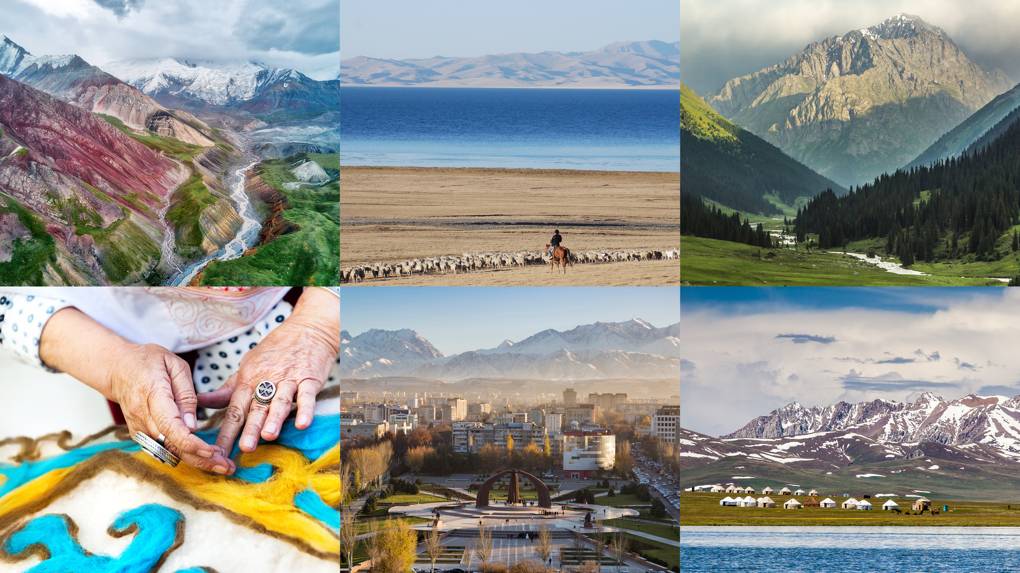
3. KYRGYZSTAN
A true off-grid escape
Now that Uzbekistan has found itself a firm fixture on the travel map, more intrepid types are turning their attention to neighbouring Kyrgyzstan. In response, an increasing number of tour operators are adding the unspoilt country to their portfolios for 2020. ‘We’re seeing a rise in people wanting to go completely off-grid, digitally detox and taste the kind of wilderness that is still untouched, untamed and untainted by tourism,’ says Amelia Stewart, ambassador for high-end London-based company Original Travel. ‘Kyrgyzstan ticks all those boxes; it’s a country on the cusp of discovery, but not for much longer.’
Kyrgyzstan is one of the friendliest and most beautiful countries in Central Asia. Whereas Uzbekistan is known for its parched deserts and heady cities, Kyrgyzstan is 95 per cent mountains; an undulating landscape with remote prehistoric and Silk Road sites, dizzying passes and plunging valleys. Its traditions are nomadic – the word Kyrgyz actually means ‘40 tribes’ – and before Russian settlement in the 1870s, most towns, including the capital of Bishkek, were made up of yurts. Bunking up in one of the country’s well-established homestays is one of the best ways to experience the Kyrgyz way of life and encounter the country’s fascinating traditions.
Its stark, craggy mountain ridges are also home to the newly minted Issyk Köl Trail Network, a 506-mile lattice of trails that allow hikers to combine ear-popping mountain landscapes with living nomadic cultures. Most of the routes pass alongside active yurt camps and high-altitude jailoo pastures, where local shepherds bring their flocks to graze during the summer months. Hardy types can summit an 11,000ft pass, then descend to share shots of vodka or a mug of fermented mare’s milk with friendly resident herders. Elsewhere, the alpine meadows of Sary-Chelek lake should not be overlooked, while the crumbling mausoleums of the Karakhanid rulers in Uzgen are too stirring to miss.
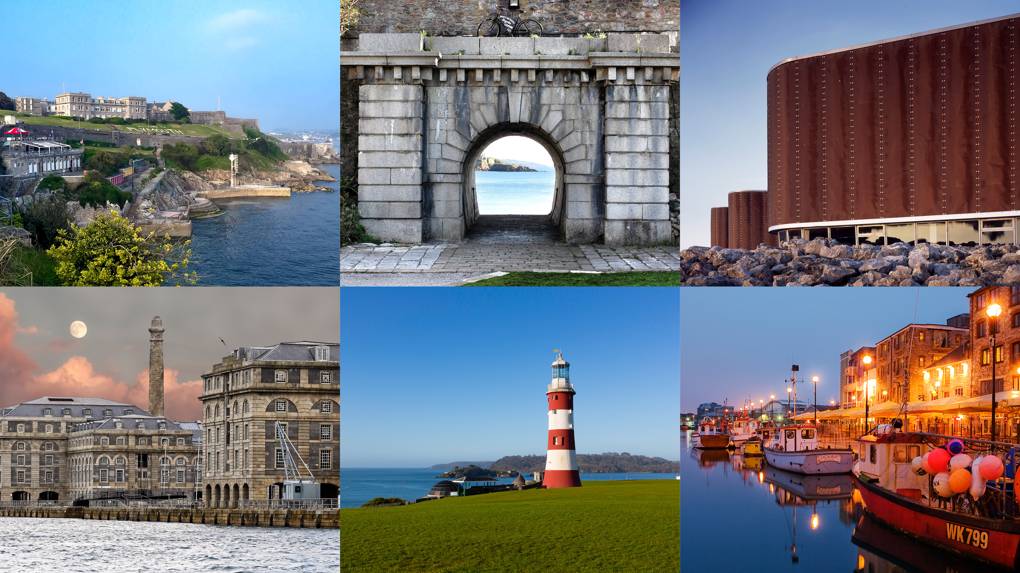
2. PLYMOUTH, UK
British seaside with a whole lot of heritage
The waterfront city of Plymouth has long sailed under the radar. But it’s starting to shrug off its (unwarranted) rough-around-the-edges rep. The arrival of restaurants from high-profile chefs such as Mitch Tonks and Marco Pierre White, as well a multimillion-pound waterfront regeneration project, mean this once-tired seaside city is beginning to look ship-shape again.
In the old port you’ll find pretty Elizabethan gardens, contemporary art galleries and waterfront cafés spilling out across the cobbles (Plymouth has the largest concentration of cobbled streets in Britain). There’s history in these harbours, and 2020 marks a landmark year for Plymouth which, for centuries has had its fortunes shaped by the sea. On 16 September 1620 the square-rigged Mayflower set sail from Plymouth on its voyage to the New World (or as we now know it, the United States of America) in search of a life of religious freedom. More than 30 million US citizens – including several US presidents, reams of writers and poets and celebrities including Clint Eastwood, Marilyn Monroe and Hugh Hefner – can trace their roots back to one of the 102 passengers and 30 crew who made the epic journey.
Plymouth is marking the 400-year anniversary with a programme of more than 100l events, including a festival of light-based art installations scattered across the city, and This Land, a theatre production performed by Plymouth locals and members of the Native American Wampanoag tribe. Another big cultural happening for 2020 will be the opening of The Box, a cultural attraction on a grand scale, developed on the site of the former Plymouth City Museum and Art Gallery. The new building will house Plymouth’s most important heritage collections on one site, including archive TV and film footage, vintage photography and art both historical and contemporary. Plymouth’s ancient quays are getting their buzz back.

1. PAKISTAN
The ultimate adventure travel destination goes from strength to strength
Thwarted by tales of terrorism and Taliban rule, Pakistan’s tourism industry has been stymied for the past two decades. But ancient valleys, relaxed visa restrictions and a high-profile royal visit from the Duke and Duchess of Cambridge at the end of 2019 mean that at a start of a new decade this remarkable country is also entering a new era.
‘Having operated tours in Pakistan since the late 1990s, I’ve had a ringside seat to its troubled tourism industry, but finally, it seems to be improving,’ says Jonny Bealby, founder and CEO of adventure-tour operator Wild Frontiers. ‘A focus on security measures, which saw the British FCO lift its advice against travel to large parts of the north, and the election of Imran Khan, who has vowed to increase international tourist numbers, has already had an impact,’ he says.
While many of the frustrating permits previously required to travel here have been dropped, Pakistan is still a high-risk destination and it’s worth checking up-to-date guidelines before booking flights. But for the intrepid traveller, this is a place of exquisite landscapes, where green spaces are overlooked by towering mountains. In fact, Pakistan has more peaks taller than 22,965ft than China and Nepal combined, making it an almost magnetic spot for adventure travellers and intrepid hikers. Visitors can follow in Michael Palin’s steps while traversing the 12,250ft Shandur Pass, home to the world’s highest polo field, or meet with the Kalash people of the Hindu Kush, famed for their cowrie-shell headdresses and brighter-than-bright embroidery. In Lahore, the sight of 100,000 worshippers crammed into the sandstone 17th-century Badshahi Mosque will leave you breathless, while Mughal-era architectural masterpieces stand resplendent on bustling street corners.
Hardy visitors will find that little has changed since Mughal times – with the peaks’ gemstone mines, fairy meadows and winding trails worn into the ground by heavy-laden yaks – while the Karokoram, stretching upwards from the north-west frontier and carved into the ancient bedrock, is one of the world’s most astonishing highways.
Before you travel always check foreign travel advice on gov.uk
Source: Conde Nast Traveler











